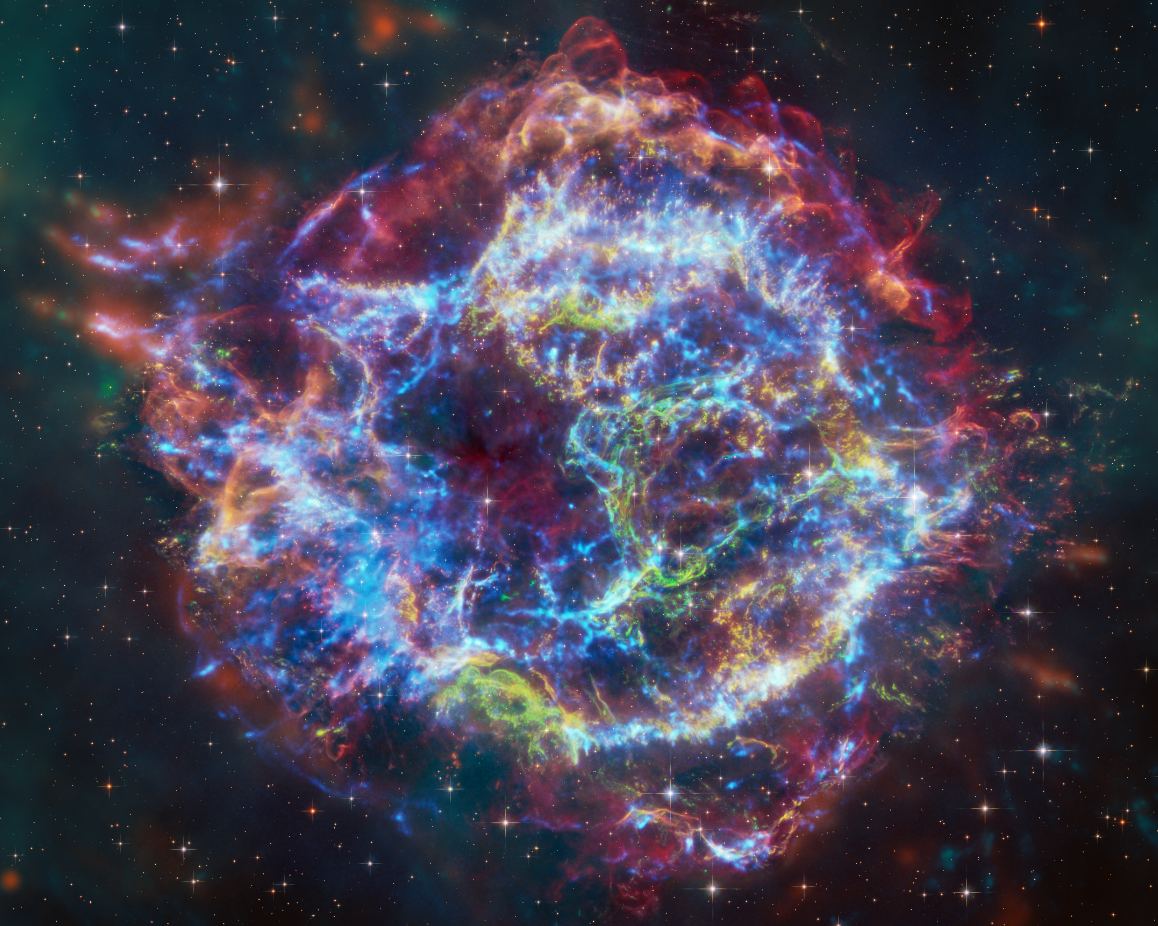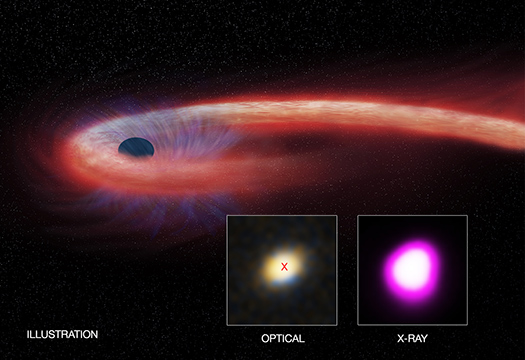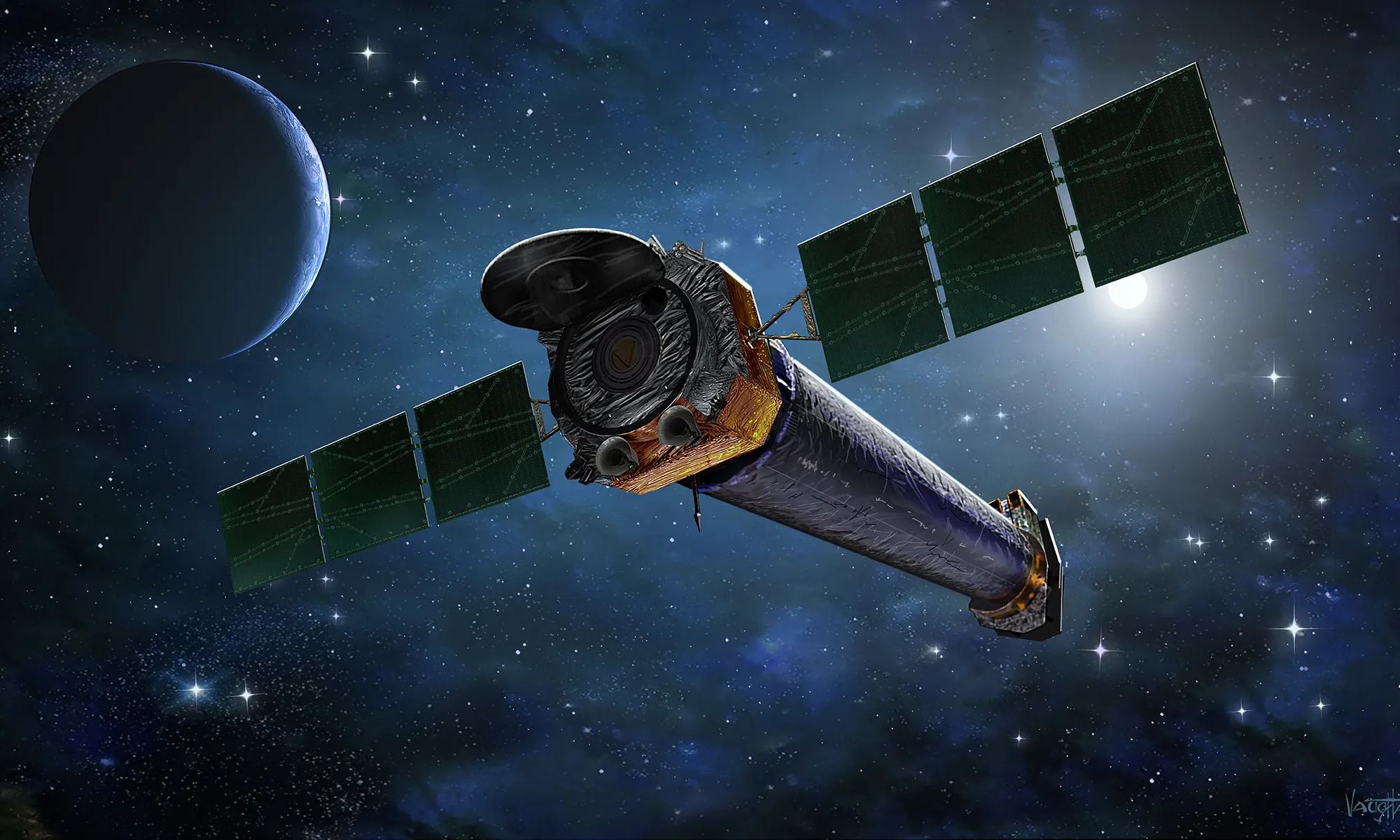The US Government budget announcement in March left NASA with two billion dollars less than it asked for. The weeks that followed have left NASA with some difficult decisions forcing cuts across the agency. There will be a number of cuts across the agency but one recent decision came as quite a shock to the scientific community. NASA have just announced they are no longer going to support the Chandra X-Ray Observatory which has been operational since 1999 and made countless discoveries.
Continue reading “NASA is Planning to Shut Down One of the Great Observatories to Save Money”JWST and Chandra Team Up for a Stunning View of Supernova Remnant Cassiopeia A

NASA’s long-lived Chandra X-ray Observatory teamed up with JWST for the first time, producing this incredibly detailed image of the famous supernova remnant Cassiopeia A. JWST first looked at the remnant in April 2023, and noticed an unusual debris structure from the destroyed star, dubbed the “Green Monster.” The combined view has helped astronomers better understand what this unusual structure is, plus it uncovered new details about the explosion that created Cas A.
Continue reading “JWST and Chandra Team Up for a Stunning View of Supernova Remnant Cassiopeia A”Enjoy the Holiday-Themed Christmas Tree Cluster

Just in time for the holidays, a new composite image of the Christmas Tree Cluster (NGC 2264) has been released. This image is a group effort: the blue and white stars in the cluster giving off X-rays are seen by Chandra, while the faint green nebula was imaged by the WIYN 0.9-meter telescope on Kitt Peak.
Continue reading “Enjoy the Holiday-Themed Christmas Tree Cluster”What Happens to Their Supermassive Black Holes When Galaxies Collide?
What’s better than two gigantic galaxies swirling into one another until they collide? How about three galaxies swirling into one another until they collide – and they all have supermassive black holes at their core to boot! Recently, a team led by Dr. Adi Foord of Stanford combed through data from the WISE mission and the Sloan Digital Sky Survey to search for instances of three galaxies colliding with one another. In all that data, they managed to find 7 separate systems that met those criteria.
Continue reading “What Happens to Their Supermassive Black Holes When Galaxies Collide?”Carnival of Space #513
Welcome, come in to the 513th Carnival of Space! The Carnival is a community of space science and astronomy writers and bloggers, who submit their best work each week for your benefit. I’m Susie Murph, part of the team at Universe Today and CosmoQuest. So now, on to this week’s stories!
Continue reading “Carnival of Space #513”
A Black Hole’s Record Breaking Lunch

Does a distant black hole provide a new definition of pain and suffering?
The black hole, named XJ1500+0154, appears to be the real-life equivalent of the Pit of Carkoon, the nesting place of the all-powerful Sarlacc in Star Wars, which slowly digested its victims.
Over ten years ago, this giant black hole ripped apart a star and has since continued a very long lunch, feasting on the stars’ remains. Astronomers have been carefully monitoring this slow ‘digestion,’ because it is so unusual for what are called tidal disruption events (TDEs), where tidal forces from black holes tear stars apart.
“We have witnessed a star’s spectacular and prolonged demise,” said Dacheng Lin from the University of New Hampshire in Durham, New Hampshire, who led the observations of this event. “Dozens of tidal disruption events have been detected since the 1990s, but none that remained bright for nearly as long as this one.”

This decade-long feast has gone on ten times longer than any other observed TDE.
XJ1500+0154 is located in a small galaxy about 1.8 billion light years from Earth, and three telescopes have been monitoring this X-ray event: the Chandra X-ray Observatory, the Swift satellite, and the XMM-Newton.
TDEs are different from another, more common black-hole related source of X-rays in the galaxy, active galactic nuclei (AGN). Like the digestion of the Sarlacc, AGNs really can last for thousands of years. These are supermassive black holes at the center of galaxies that pull in surrounding gas and “emit copious amounts of radiation, including X-rays,” explained Lin in a blog post on the Chandra website. “Radiation from AGNs do not vary a lot because the gas surrounding them extends over a large scale and can last for tens of thousands of years.”
In contrast, TDEs are relatively short-lived, lasting only a few months. During a TDE, some of the stellar debris is flung outward at high speeds, while the rest falls toward the black hole. As it travels inwards to be consumed by the black hole, the material heats up to millions of degrees, generating a distinct X-ray flare.
XJ1500+0154 has provided an extraordinarily long, bright phase, spanning over ten years. Lin and his team said one explanation could be the most massive star ever to be completely torn apart during a TDE.
“To have the event last so long at such high luminosity requires full disruption of a relatively massive star, about twice the mass of the sun,” Lin wrote; however, “disruption of such massive stars by the SMBH is very unlikely because stars this massive are rare in most galaxies, unless the galaxy is young and actively forming stars, as in our case.
So, another more likely explanation is that this is the first TDE observed where a smaller star was completely torn apart.
Lin also said this event has broad implications for black hole physics.

“To fully explain the super-long duration of our event requires the application of recent theoretical progress on the study of TDEs,” he wrote. “In the last two years, several groups independently found that it can take a long time after the disruption of the star for the stellar debris to settle onto the accretion disk and into the SMBH. Therefore, the event can evolve much more slowly than previously thought.”
Additionally, the X-ray data also indicate that radiation from material surrounding this black hole has consistently surpassed what is called the Eddington limit, which is defined as a balance between the outward pressure of radiation from the hot gas and the inward pull of the gravity of the black hole.
Seeing evidence of such rapid growth may help astronomers understand how supermassive black holes were able to reach masses about a billion times higher than the sun when the universe was only about a billion years old.
“This event shows that black holes really can grow at extraordinarily high rates,” said co-author Stefanie Komossa of QianNan Normal University for Nationalities in Duyun City, China. “This may help understand how precocious black holes came to be.”
Lin and his team will continue to monitor this event, and they expect the X-ray brightness to fade over the next few years, meaning the supply of ‘food’ for this long lunch will soon be consumed.
For further reading:
Paper: A likely decade-long sustained tidal disruption event
Lin’s blog post on the Chandra website
Chandra press release
Additional images and information from Chandra
Solar Storms Ignite Aurora On Jupiter

The Earthly Northern Lights are beautiful and astounding, but when it comes to planetary light shows, what happened at Jupiter in 2011 might take the cake. In 2011, a coronal mass ejection (CME) struck Jupiter, producing x-ray auroras 8 times brighter than normal, and hundreds of times more energetic than Earth’s auroras. A paper in the March 22nd, 2016 issue of the Journal of Geophysical Research gave the details.
The Sun emits a ceaseless stream of energetic particles called the solar wind. Sometimes, the Sun ramps up its output, and what is called a coronal mass ejection occurs. A coronal mass ejection is a massive burst of matter and electromagnetic radiation. Though they’re slow compared to other phenomena arising from the Sun, such as solar flares, CMEs are extremely powerful.
When the CME in 2011 reached Jupiter, NASA’s Chandra X-Ray Observatory was watching, the first time that Jupiter’s X-ray auroras were monitored at the same time that a CME arrived. Along with some very interesting images of the event, the team behind the study learned other things. The CME that struck Jupiter actually compressed that planet’s magnetosphere. It forced the boundary between the solar wind and Jupiter’s magnetic field in towards the planet by more than 1.6 million kilometers (1 million miles.)
The scientists behind this study used the data from this event to not only pinpoint the source of the x-rays, but also to identify areas for follow-up investigation. They’ll be using not only Chandra, but also the European Space Agency’s XMM Newton observatory to collect data on Jupiter’s magnetic field, magnetosphere, and aurora.
NASA’s Juno spacecraft will reach Jupiter this summer. One of its primary missions is to map Jupiter’s magnetic fields, and to study the magnetosphere and auroras. Juno’s results will be fascinating to anyone interested in Jupiter’s auroras.
Here at Universe Today we’ve written about Jupiter’s aurora’s here, coronal mass ejections here, and the Juno mission here.
Weekly Space Hangout – March 20, 2015: Lee Billings’ Five Billion Years of Solitude
Host: Fraser Cain (@fcain)
Special Guest: Author Lee Billings, discussing his book “Five Billion Years of Solitude”(@LeeBillings / leebillings.com/)
Guests:
Dr. Pamela Gay (cosmoquest.org / @starstryder)
Morgan Rehnberg (cosmicchatter.org / @MorganRehnberg )
Brian Koberlein (@briankoberlein)
Continue reading “Weekly Space Hangout – March 20, 2015: Lee Billings’ Five Billion Years of Solitude”
Weekly Space Hangout -March 13, 2015: Astrophysicist Katie Mack
Host: Fraser Cain (@fcain)
Special Guest: Astrophysicist Katie Mack (@AstroKatie)
Guests:
Ramin Skibba (@raminskibba)
Charles Black (@charlesblack / sen.com/charles-black)
Brian Koberlein (@briankoberlein)
Continue reading “Weekly Space Hangout -March 13, 2015: Astrophysicist Katie Mack”
Weekly Space Hangout – Jan 9, 2015: Andy Weir of “The Martian”
Host: Fraser Cain (@fcain)
Special Guest: Andy Weir , author of “The Martian”
Andy was first hired as a programmer for a national laboratory at age fifteen and has been working as a software engineer ever since. He is also a lifelong space nerd and a devoted hobbyist of subjects like relativistic physics, orbital mechanics, and the history of manned spaceflight. “The Martian” is his first novel.
Guests:
Morgan Rehnberg (cosmicchatter.org / @cosmic_chatter)
Ramin Skibba (@raminskibba)
Brian Koberlein (@briankoberlein)
Dave Dickinson (@astroguyz / www.astroguyz.com)
Nicole Gugliucci (cosmoquest.org / @noisyastronomer)
Continue reading “Weekly Space Hangout – Jan 9, 2015: Andy Weir of “The Martian””



